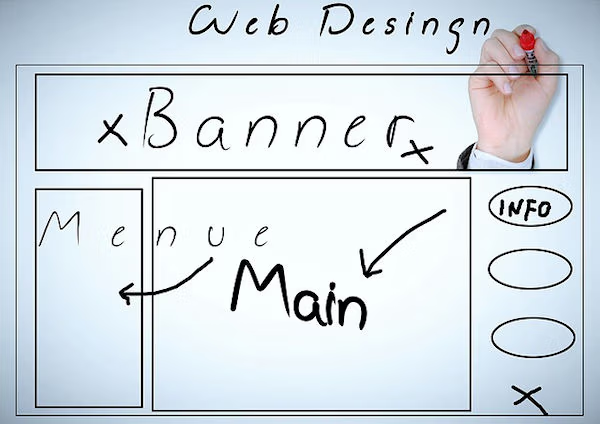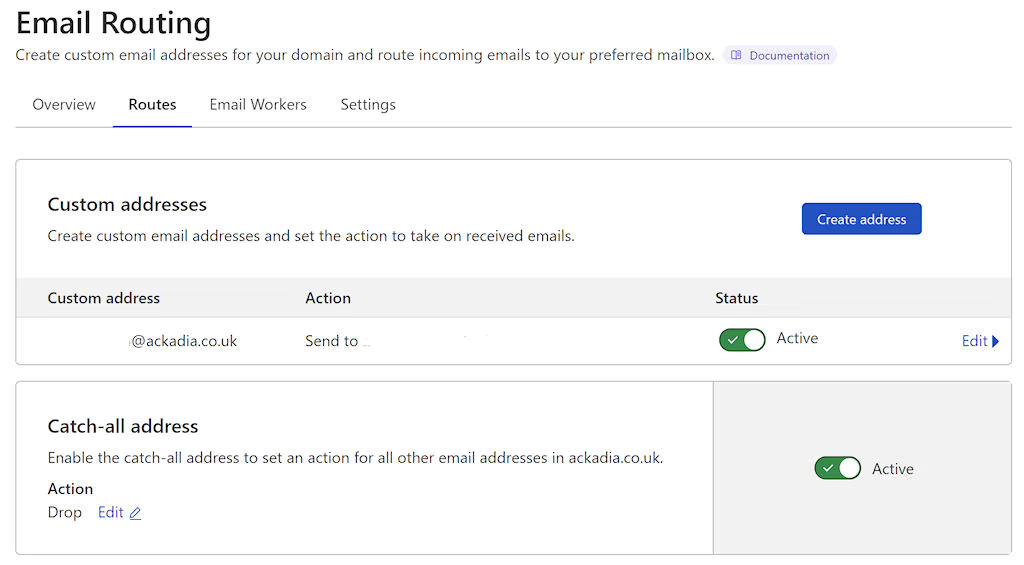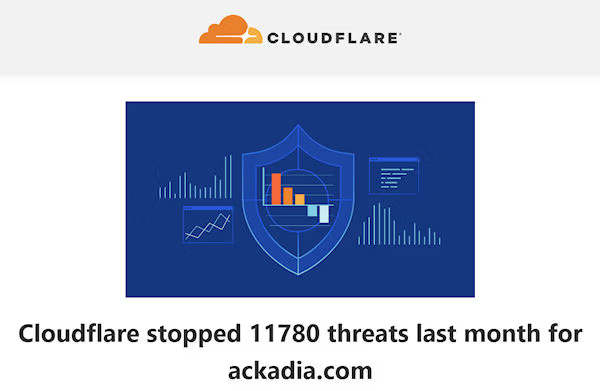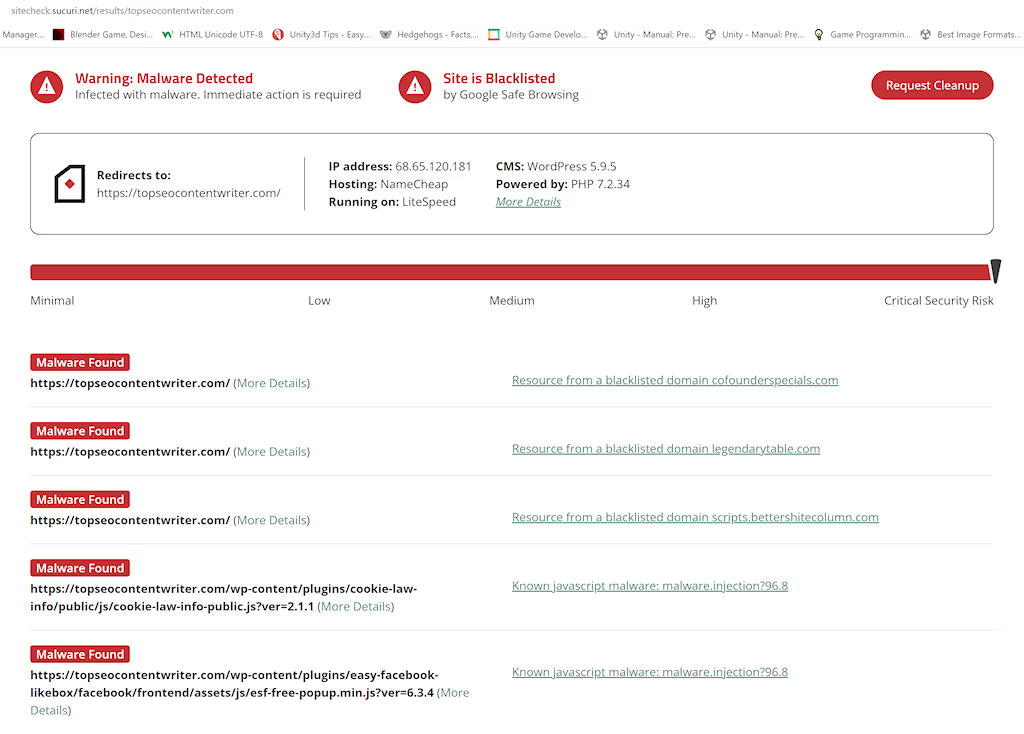Q&A forum
This is the part where I answer any reasonable questions you may have about web design, hosting, support and pricing.
I imagine you will have questions. Read on, and if the answer you are looking for isn’t below, ask, and I’ll add it to the page.
Q&A menu:
- How long does it take to build a website?
- What is involved?
- What about photos and images?
- What if I want more control?
- Feature creep
- Security: Keeping your site, visitors and data safe.
- What about Search Engine Optimisation?
- How many clients do or will you manage?
- How much!?
- Where are you based?
- What about…
<p?
How long does it take to build a website?

While the answer is that it depends, my general answer is about four hours, given enough material to work with.
This takes me to an article by Onix Systems, asking, How long does it take to build a website?”
They suggest 250 hours, dropping it down to 190 hours for a WordPress site. They also warn:
Many freelance developers offer to complete a WordPress website in 2-3 days. Others say they can launch one ‘within hours.’ However, this declared super-speed should be an alarming signal. A functional custom-designed website indeed takes more time to build.
Here they are both right – and wrong! For a start, it depends on how involved the project is, the client’s budget, and how far they want to take the functional custom-designed aspect. If you don’t want or need a bespoke design and are happy with bog standard, then it’s a couple of hours.
If you have simple needs and a budget of just £10 a month to spare, you are not going to throw thousands, even ten of thousands of pounds at a web agency for their team to work with you on your life story and aims, on approving each wireframe, on a pixel-perfect UI/UX. Then more approval stages to reach the MVP and extra stages (all charged, of course) to prepare for live.
I pointed to Onix because it ranked high in a search. They are a Ukrainian company with over 200 staff and clients worldwide. They don’t tell you how much they charge on their site, which tells you you probably can’t afford them. Still, I stand with Ukraine, so if you have that sort of budget, now you have their link.
Back in the real world, I only started to talk to my friend about CSS, and he half-jokingly threatened me with a spanner. Real people: sole traders, small businesses, and cash-strapped charities don’t have the time, need or budget for corporate trappings. They want it done. A basic site is a slam dunk. It’s nothing, especially if you’ve been doing them for decades.
Besides, I recently spent over 600 hours playing a Viking game, so if your site is more involved, I’ll put the extra time in. It doesn’t change the price.
OK, what’s involved in building a website?

The general (agency) idea is you have lots of meetings with coffee and biscuits, notepads, flipcharts, and loads of coloured Post-it notes. (Ch’ching).
Then you have rough wireframes of ideas. (Ch’ching).
Then detailed wireframes and Photoshop mockups. (Ch’ching).
Then more meetings and more detailed Photoshop. (Ch’ching, CH’CHING).
… You get the idea. Weeks or months of billing before you see the result.
My way is more, “Sure, fine, what do you want? What have you got for me to work with?” And I’ll get on with it!
If I’m in a good mood and like you, I’ll look around and evaluate similar and competing businesses, see what I think you or they are missing, and make suggestions. How many things are broken on their site? How does their social media looks? Is it active, or was their last post 18 months ago? For instance, in a short post on SEO (Go BIG or go home), I noted how even global company mess up on the basics.
If you are a big company or government branch with lots of offices and an established and exact look, then yes, maybe you want to be treated like royalty, but I’ve seen NatWest bank, Google, Samsung, and even Carlsberg screw up, so paying a fortune for results doesn’t guarantee perfection. You may have noticed on the home page how troubling I found Yellow Pages to be.
I will make certain assumptions like you’ll already have a look in mind, whether that’s a site you’d like to copy or a business card with your logo (ideally which you can supply in some usable form, typically PSD). I’ll also allow you don’t know and leave it up to me, understanding (within reason) you can make changes over time. (I’m happy to make changes over a year, FoC, but if you suddenly decide you want to look like Amazon, not happening).
If you have a printing company or designer I can work with, or you can get colours from, that speeds things up too.
e.g. If you have a precise shade of blue text or purple borders you want, it’s not something I can guess at.
Also, and you need to bear this in mind, what you see from a validated Pantone printout or screen is not quite (or at times anything like) the same shade experienced with a cheap old monitor or an ageing iPhone. Your website’s target is or should be the customers you are targeting rather than appeasing your art director.
![]()
For a new staging site or template page, I can fill it with Lorem Ipsum, but I really need actual copy text to work with or from. Same with images, I can use a bland space filler [x], or you can give me something useful.
What about photos and images?

Source:
Most of the feature images you see here on Ackadia came from Pixabay and are free for commercial use, generally with no attribution required, though it’s polite to do so. At most they suggest buying them a coffee.
Or you can hop over to iStock or Getty Images, or even have a professional photographer or illustrator prepare them. If you can afford Getty Images though, my prices will not be an issue! (Included in my business plan, given the numbers, is bundling iStock access up to the value of £1,400 a month!)
Staying with immediate options:
For instance, if you pick a unicorn, all I need is the link, e.g.: I’d like this unicorn [ https://pixabay.com/illustrations/moon-unicorn-fable-1982890/ ] for …
Please note you are responsible for legally sourcing material, which is to be correctly cited if required. (e.g. No lifting random stuff of Pinterest, Instagram, or Facebook without permission!)
If you pick them, it saves me work and you from saying, “I don’t like that; what else have you got?” (Don’t be that person, it makes me grumpy!)
I’m not an artist, but I can edit, resize and manipulate photos and images if required. I generally use Paintshop Pro and CorelDraw, but I can work with others programs such as Adobe.
Size and format:
For reference, I require 1200×628 (or bigger to resize/manipulate) for the feature image and 1024×1024 for body images (responsively resized).
I prefer .jpeg but can work with any file format and edit or convert as required. (Images are automatically converted to .webp at the server level).
Filenames
I’m a tad obsessive about details; they matter for search engines, visitors, and to keep me happy. They have to make sense.
Things like these make no sense to me or anyone else (real examples I have to work with):
DSCF4882.jpg
IMG-20181111-WA0014.jpg
31842017_2041617542717229_1260488638412619776_n
Web design – proper web design – is about conveying information. At the code level, this is filenames, alt, desc and title text, and captions. It has to have meaning. The filename has to have meaning too.
A Google search for DSCF4882 offered some 10,000 results, ranging from armed police to ferns to a catholic school. IMG-20181111-WA0014 offered over 400,000 results.
Being told by someone you’ve never met that, “It’s obvious! That’s Uncle Tom in a Halloween mask” … ![]() .
.
Now, consider a file renamed to: ‘spooky-evening-ye-olde-inn-mytown-1of8-Fred-nov-2022.jpg‘
That answers who (Fred), what (spooky evening event), when (November 2022), and where (Ye Olde Inn, Mytown). It also tells me that eight photos have been selected. So much more to go on.
Brass has free email, yet Silver doesn’t. Why is that?
To be honest, I’d rather not offer the budget Brass plan and indeed may remove it next year. But to answer your question, the host for the low-end stuff (Siteground) gives free email, but the high-end host (Rocket.net) doesn’t. Just how it is. It would make my life much easier if they did.
Anyway, Rocket requires Cloudflare and tinkering with the DNS at fairly involved levels. One of the options here is email routing or redirection, thus:

The Professional option creates real versions of sales@yourshop.co.uk, with storage space and extras (for a price), which I then integrate with Cloudflare (more DNS tinkering). You can add (or take away) options like this, and the price will rise or drop accordingly.
What if I want more control?
Whether this is editing your site, sorting Microsoft Professional Email or something else, if you want to manage or sort it separately, that’s fine.
The base price stays the same, so in the example of MS Pro email, I’ll need the TXT and MX details etc., to add to Cloudflare. (There will be no charge for this).
Equally, if you are comfortable with domain changes and Cloudflare and can edit the DNS without breaking your site and want to do it yourself, have at it. It still won’t change the price, but it gives you a level of control you are comfortable with.
Feature creep

Also known as scope creep, most developers and programmers know about this and generally hate it intensely. Most businesses (intentionally or not) will try to push their luck with it.
So, what is ‘feature creep’, and how do I feel about it?
A pizza order is the best way to consider this! You’ll get the idea.
The customer asks the price for a 9″ ham and pineapple, with a small bottle of orange.
Haggling commences, and you agree to a price and delivery time.
At the last minute, the customer says, no, sorry, they want a 12″ Meat Feast with a large cola.
For the same price, delivered as agreed.
Obviously, not happening, so either it’s cancelled, or you start over and agree to the reprised order.
Then, at the last minute, the customer phones and asks for extra toppings of olives and mushrooms. For the same price.
As you can see, this can quickly get aggravating for anyone.
Now, within reason, I am happy to allow feature creep as long as:
a) it’s gradual and not sweeping changes,
b) it doesn’t cost me money,
c) I’m not busy with something else, and you want it immediately, and
d) be reasonable; do not take me for granted!
e.g., if you want a side order of fries and garlic bread with that, you are paying for the extras.
A good example of this is you suddenly wanting a chat option installed, one like Tawk to.
On general principle, sure, no problem. but in the case of this app, while I know it was OK in the past, it hasn’t been updated in 7 months, so that is a concern.
Here I may look for an alternative, so suggest Formilla. You try it, like it, but want Formiilla’s managed chat. Again, if I’m not too busy, I’ll help you set this up. However, it is a premium service. It’s up to you to cover the charges.
As for point d): ask yourself if you are being reasonable and if you’d put up with your behaviour.
Free updates, changes, edits, and all the rest are complimentary. In the same way, a choc mint on your pillow is complimentary. Try asking a hotel manager for a full box of After Eight Mints because you scoffed the complimentary ones…
I’ve had unreasonable clients in the past, some at the local government level. I didn’t put up with it then, and I won’t now.
The other feature creep!
The term is also applied when a product (game, website, whatever) keeps adding features until the original form is either unrecognisable, unusable, or completely broken.
There are plenty of articles on this, e.g. WebFX: Eight Tips on How to Manage Feature Creep.
Security: Keeping your site, visitors and data safe

I’m a tad paranoid, with good reason. When it comes to websites, I don’t only think they are out to get me; I know they are! Not me personally, of course, but I only have to glance at the logs to see where the traffic is coming from, what they are trying to access, and so forth. They are always trying to get into admin, to other exploitable areas, and to comments and forms for spam and social engineering attacks.

I doubt a day or even a second goes by that some plugin, site, CMS, company and or government is not hacked. You can’t keep targeted attacks out, but you can stop or limit the rest.
Zero-day exploits are a problem but are usually fixed once they are known and exposed. It’s up to the tech support to apply patches and updates and remove risks.
Any out-of-date or poorly configured plugin, theme or custom function is a threat. I will automatically disable and or remove these. If this removal negatively affects your site, I will work (with you) to find a solution.
Beyond that, for silver and gold plans, firewalls and other layers of security are managed by the hosts and by Cloudflare at an enterprise level.
SSL, TLS (1.3), and other measures are included and applied to all sites. This is adequate for most needs, including eCommerce, but if you want or require higher-level premium certificates, such as EV, help will be provided with the installation.
In addition to these is comment spam. For this, particularly for businesses, I recommend a commercial version of WPForms, in association with Akismet. (I will, at some point, bundle Akismet as a complimentary option).
Most of the security is automated, so plug-ins auto-update and site back-ups are done daily. (You can, of course, add extra backup measures). This extends to firewalls, bots and malware protection.

Search Engine Optimisation (SEO)

“ Oh yes, and I want a top, page one Google rank for my site! ”
![]() Aha, very funny, Sir. Now…
Aha, very funny, Sir. Now…
![]() Oh. Really? That’s not how it works, sorry!
Oh. Really? That’s not how it works, sorry!
Sorry about Smiley there. For a minute, he thought you were being serious!
SEO, SEM, SERPs, what’s that all about anyway? What can we do?
Google has control of about 93% of the market share and growing. It’s not a virtual monopoly; they dominate it and pretty much own the Internet. One core change, one blacklist and kings fall. That is the power they hold. Google used to be about “Do not be evil”, but removed that slogan and got on with making even more money.
There are over 200 rules to determine whether you will be in position #1, page one, or languishing around page 100. Also, even with their best guesses, no one knows all these rules, and they constantly change anyway.
The long and short of it is, without impossible ‘cheats’, it is impossible to promise any rank on Google or any other search engine. And if you have a rank, it is equally impossible to promise to keep you there. Anyone that promises otherwise is lying. Or using trickery to appear to give you a high rank.
That said, some long-established specialist companies get pretty darn close. Search for ‘SEO’, and I’d be surprised if Moz, Ahref’s, SearchEngineJournal and Wikipedia weren’t all on page 1, fighting for rank #1. I’d be equally surprised if you pushed me off page 1 for certain search terms.
If you understand and play by the rules, competition allowing, you can get a higher ranking for specific search terms – out of the hundreds of millions of combinations.
SEM
Search Engine Marketing is not something I can help you with; sorry. I’ve had a play in the past, dabbled with AdWords and Facebook advertising, but that’s about it.
As I understand it, SEM is mostly about picking (buying) the right keywords from Google and co for adverts. Every word has a price and value based on variables like events and time of year, popularity, demand etc. (e.g.’ Christmas’ costs more in November than in June. ‘Manhatton’ costs more than ‘Wigan’).
Also, and worse, you are bidding on the term(s): it’s an auction, not a set price.
If you look into this, some industries are paying up to £100 per click for phrases, others £200… rising to over £1,000 per click. (i.e., if you agree to that and someone clicks out of curiosity, you still have to pay Google a thousand quid!)
What you need to understand about SEO, SEM and, in particular, buying Ads is it’s not about being on page 1. It’s about being at the top of page 1.
Between 65% and 95% of clicks go to the first 4 links listed.
Not good odds if you have 100 or 1,000 competitors after the same slot.
These links might help if you want to know more:
ahrefs: What Is Search Engine Marketing? Beginner’s Guide
Hubspot: The Ultimate Guide to SEM
SEO
Forgetting black hat tricks, which never end well, there are a few ways I can help you, and some I can’t or won’t. Battling for first place in this can be too time-consuming, too complex and too expensive. There are specialist companies for that if you need it, but they are not cheap.
I covered SEO in more detail on ackadia.com, including looking at advertising on Facebook: Dummies guide to SEO – for small business owners.
What WON’T I do?
Keyword and keyphrase optimisation.
If you limit it to one word, like SEO, that’s 1.2 billion results.
SEO +”St Helens” is 550,000 results (about 4x the town’s population). The top result is an agency claiming to be “The #1 SEO Agency in St Helens” – with an Exeter phone number. Besides NOT being in St Helens, Google is aware of cookie-cutter doorway landing pages to game the system, says they are illicit and is stamping them out. A month or two from now they may find themselves deindexed (removed from Google) and whining, “It’s not fair”. (e.g. Location pages in Google’s crosshairs after October spam update. Ranking drops and deindexed pages are plaguing service area business sites).
To complicate it further, Google’s SERP is based on their best guess at YOUR intent and on YOUR (or your IP’s) search history. So no two searches will be identical; the words you search with can dramatically alter the results, trends can alter the results, and so forth.
Putting it simply, if you are the only farrier within 50 miles, I would have a good chance at getting you in the top few for “farrier near me” (which relies on locations being turned on).
But if it was ‘fast food near me’, competing with 100 chippies, pizza houses and kebab shops, UberEats and Deliveroo and all the rest, and you want to be on page one, without spending A LOT OF money…
![]() Smiley is cracking up!
Smiley is cracking up!
Similarly, and wholly related, I won’t rewrite your posts and pages to fit all the best keywords.
I am exploring it more now, but that’s for a year or two from now.
Forgetting time, the tools to do this seriously can easily run into tens of thousands a year. I can do simple things like throw a site into SpyFu and – here – see I rank for over 700 keywords and get 100% of my traffic organically. Diib will give me another set of stats. SEMRush, ahrefs and others will do more.
Off-page SEO: Backlinks
This is more or less sorting out who links to you and whether you want them linking to you. It butts head with paid links, which Google DETEST (unless you are paying them for AdWords, in which case, “come on in, buddy, what sort of budget are we talking?”)
Google are somewhat hypocritical, but I understand their reasoning.
The only way to do it without crossing lines is to write top-notch posts and articles often and get them shared. Even then, it will take years and need scores or even hundreds of trusted sites pointing back to you.
Note: The following scenario is made up; I have no idea who the current mayor is, or if they have cousins (dodgy or otherwise).
If your mate happens to be the Mayor of Liverpool, well, Google may be interested.
But then Google finds out that actually what happened was you met this bloke in the pub who knows a bloke, whose cousin works for the mayor, and if you bung him a grand, he’ll see the mayor mentions you.
Now Google, who knows all about the mayor’s dodgy cousin, doesn’t trust you or the mayor.
What WILL I do?
Excluding the above, SEO can be broken down into:
On-Page SEO (your website’s content and structure)
Off-Page SEO (social media, in-person networking, flyers, print adverts, word of mouth etc.),
Technical SEO (loading time, website build and function).
On-Page SEO
As I said, much of this revolves around keywords, but there are still various ways to improve. I can’t detail them all here, but here’s a selection:
Keywords and interesting (catchy) terms for your site title, tagline, page, and headers.
Writing interesting, authoritative or expert posts on your special interest.
Make sure the format fits the target audience. Mostly, this means short sentences and paragraphs, not too many obscure words, explaining acronyms (e.g. SERPs), and proofreading. After all, it’s hard to appear proffessional if you can’t spell professional. Common, easily done mistakes like mixing up it’s, its and its’ are a red flag for some people.
Enough white space so that the eyes flow down the page without tiring or getting distracted.
Appropriately chosen and positioned photos and images to brighten up the post and explain things without a thousand words.
Structural (under the hood) improvements that people may or may notice, but search engines do. This includes domain name (not so much anymore), image filenames (mentioned above), alt tags and more. For instance, hovering over the underlined SERPs earlier will tell you what it stands for.
You can do similar for images, links or other elements… Hover your mouse over me. Do it! You know you want to!. This uses title=”something”. Problematic for mobile devices, but it can be made to work. (Don’t use this to spam, it’s meant to convey useful additional information.
(aria-label=”something” serves a similar if more specialised function for accessibility.)
Lastly are SEO plugins like Yoast. The free versions are good enough for casual help. The full versions do more. They won’t necessarily improve your rank (but can), but they will (or can) greatly improve your chance of a ranked link being clicked based on its meta description.
Off-Page SEO
That list is largely self-explanatory. I can offer advice for them if you need it.
Technical SEO
This is my default setting. You can be assured I will do my best to maintain this.
What about conflicts with competition?
Here, I refer to the notion of me designing websites for half the fast food shops in town. Obviously, if I am trying to get you to a great rank* and take on more of the same, it can pose rather a problem.
If one is a traditional chip shop and the other just sells tacos, it’s less of an issue. But if the chippy then decides to sell tacos and wants me to rank them above the taco shop… Firstly, it’s a problem as my duty is to the taco shop, Secondly, I wouldn’t help you with that.
However, if I were doing sites for two chippies in the same area, that would be unacceptable.
So, within a given area, I will only take on one client of that type of business.
The caveat here is that if your service or client area covers just Thattoo Heath or just St Helens, I don’t see a major problem with having another site focused on Skem or Widnes.
*(Again, I would remind you this is part of a wide-ranging complementing bundle of value-added services and not part of any plan’s costs.)
The SEO journey
Or, How Search Engine Optimisation isn’t really about search engines!
I will finish the SEO section with this link: The Freelance SEO Professional’s Journey.
It takes a step back. Rather than asking how a search engine expert would promote your site, it asks how they promote themselves and their own site to get on the ladder.
Hint: it’s not on-page SEO!
Less than 9% of their work comes from natural search, with another 7.7% coming via natural organic social media posting.
The rest is a mix of networking and network referrals (think Chamber of Commerce face-to-face), Google ads (7.5%), Facebook and SM ads (6.1), and Upwork (SEO for hire site, similar to Fiverr).
Put another way, 76% of SEO is off-page / off-site, 15% is advertising, while getting found on Google is the tail-end of it.
As the data suggests, freelancers primarily rely on reputation and word-of-mouth to generate work.
How many clients will you manage?
My ideal target is hosting and managing 20 Gold plans, at £600 a year each.
Here’s what you will get if / when I reach the target:
Silver plan with:
Hosting with Enterprise level CDN and security
Professional email address (1)
Full versions of WPForms (itself nearly £600), WP SMTP, All-in-One SEO and Akismet anti-spam
I am also looking at subsidising an iStock premium image access allowance of 25 downloads per month. (Normally over £1,000 a year).
For an example of the difference that makes, Pixabay has no photos for chippies; iStock has nearly 900 for ‘fish and chip shop‘. iStock also has nearly 6,500 photos and images filed under ‘fish and chips’. If you are posting a few articles a month, it’s worth considering.
What if you do better than you thought?
![]()
See the next section.
How much!?
At this point, I am still playing around with prices, bundle options and break-even points. It’s about balancing what I know you need and what people want to pay in the current economic climate. Also, about what the market rate is for what I offer.
Locally, my competition would probably be Jelli’s Design. I don’t think she can match me on the technical side, but she can absolutely run circles around me for graphic design and never tire. I might even go to her for a new logo! However, her prices are currently treble mine.
Lucy Webster, another graphic artist, is, I would say, between Jelli and myself, in terms of art and tech. (If you are reading this, Lucy, fix your portfolio!)
Solution? I double my prices and offer a 50% discount for the first 20 takers on the gold plan. One-off lifetime deal. Some price changes will be inevitable over time, as supplier raise their prices, but otherwise, no unpleasant surprises.
If you are wondering why I am happy to promote (potential future) competitors, I’m more niche. I am not interested in offering block-based designs; I am looking to offer clean, fast-loading, content-driven sites. (But I will migrate and support other designs – as long as they are secure).
Where are you based?

Why don’t you list your address and number?
Firstly, I’m not actually a business (yet, at any rate) and don’t want strangers turning up at the house, ever. Besides that, I am and probably will remain what Google class as a Virtual Business. The other non-bricks and mortar models are Service Area Businesses (who go to you, e.g. plumbers) and Home-based businesses (who are more flexible, e.g. dog walkers and nail technicians). The accepted options for these classes are ‘unlisted’ or ‘by appointment’.
I can set up offices if it makes you feel more comfortable. Where would you prefer?
St Helens Chamber, Salisbury Street or maybe Century House
Liverpool (Jamaica Street, L1)
Cardiff (Museum Place, CF10)
London (Fitzroy St, W1T 6EB, just off Regents park)
Most of those are virtual offices with the option of landline numbers, for which I can have receptionists, automated messaging and/or call forwarding. They are real enough to be accepted by Companies House for a registered office. I could easily set up offices in New York, Washington DC and Vancouver too.
For surprisingly little cost, I can add chat, monitored 24/7 by technical sales staff.
That’s the funny thing about the Internet (and psychology). It changed the world. Then Covid changed it some more! If I gave you an office address, a virtual office address (which is essentially fake but yet legal), you would feel more comfortable. If I gave you a physical address (for a shared office) in a business centre, complete with meeting rooms, you’d be even more at ease. It’s unlikely I’d ever to use it, but it’s all about appearance, right?
That is how most of the world works. Cognitive dissonance is the term: preferring a comforting lie to an unpleasant truth.
It should be noted that SEO experts at MOZ file this under never do this:
“Don’t set up unstaffed virtual offices or P.O. boxes in an effort to fake locations for the sake of creating local business listings.”
In the US, 50% of business start out working from home; Apple was started in Steve Job’s garage.
According to NimbleFins, there are over 5.5 million small businesses in the UK, most of which (4m) are sole operators. They also fetched in £1.5 trillion in 2021.
However, Google Business is all about local businesses and local content and favours bricks and mortar premises. Google has peculiar, outdated and sometimes draconian rules about local businesses. Curiously, their solution for home-based workers is “but you can pay us for advertising” ![]()
Still, I have owned and run limited companies and had several offices. I have business qualifications, along with science and technology. Whatever makes you comfortable.
Answer not here yet?
If I haven’t answered your question yet, or if you have any other questions, hop over to the contact page and ask away.
Feature image by Tumisu, from Pixabay